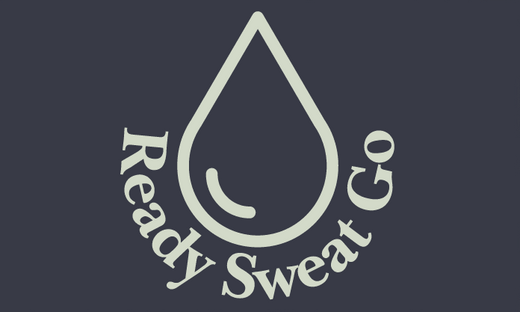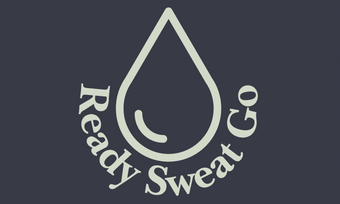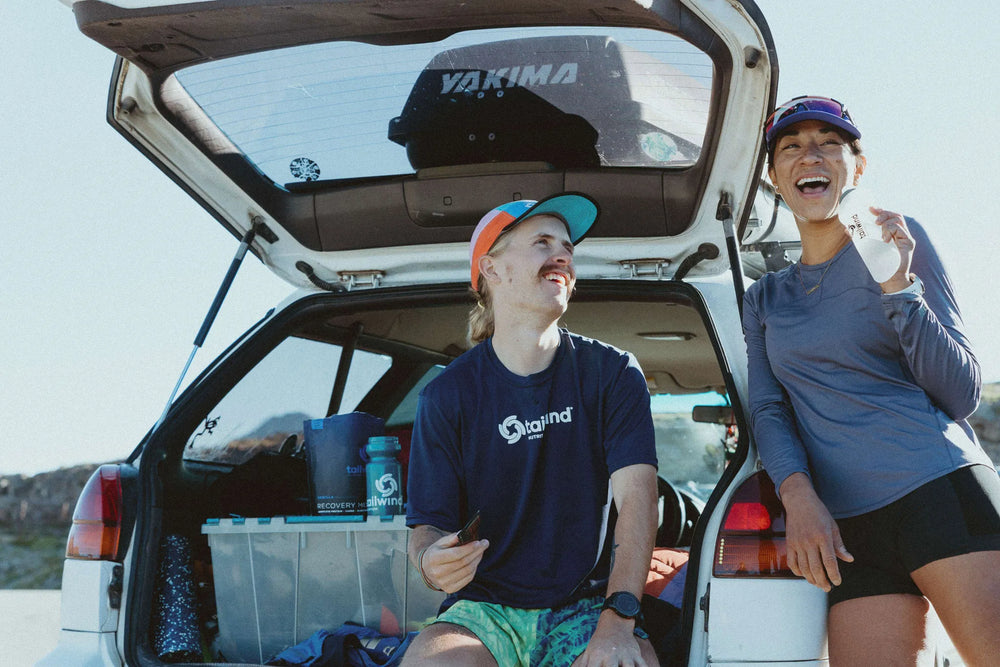Completing the Rat Race Coast to Coast Challenge (Scotland)
The Ultimate Scottish Adventure
I just completed the RatRace Coast to Coast One Day Challenge, and it was one of the toughest things I’ve ever done. So, let me share my adventure with you.
The Rat Race coast to coast is a 100+ mile endurance adventure race, starting in Nairn on the North Coast of Scotland and ending at the Isles of Glencoe in the west. To break it down, it begins with a seven-mile run, followed by a seventy-eight-mile cycle, another run, but now 14 miles in length and lastly, a one-mile kayak! This is not to mention the climbing involved, which I reckon is about 10’000 ft all told.
Below, I’ll share my experience and provide essential tips, including nutrition, gear and the training I found useful to help you succeed. At the bottom of the page, we have a helpful video with a more in-depth look at the kit I used, plus some footage from the day itself (the weather was typically Scottish), so please ignore the quality!

Understanding the RatRace Coast to Coast
Now, I’ll walk you through the various sections of the rat race as I encountered them that day.
Run 1: 7 Miles - Nairn to Cawdor Castle
The training is done, the weather is fine, and the anticipation level is set to max; what could go wrong? Well, anything, but I’d done everything I could to prepare, so what will be, will be, right?
The first run is great. Everyone is buzzing, the atmosphere is charged, and you run a long, flat course by the river Nairn. It’s a gentle gravel undulating path through the forest. It’s serene and exciting, sunlight bouncing off the river and dappling through the trees.
If you’re on the quicker side, the challenge is that you can’t pass people, as it’s single track for most of the distance; when it opens up, you’re almost at the bike transition at Cawdor. If you are comfortable at an under 9-minute mile pace, and please remember that this event is a marathon, not a sprint, then you want to get near the front when you start. It’s worth remembering that for all the time you might save here, a few minutes, it’s not worth trying to blast past the pack on a narrow pathway; in my humble opinion, energy conservation is what you’re looking for.

Cycle: 78 Miles - Cawdor Castle to Fort William
Now, the challenge begins. You get into your cycle gear; you want to think about the weather here. At the start, the race director warned us that the weather would change for the worse, and that the kayak was 50/50 whether or not it would happen. After completing the first run and switching into my cycling gear, I felt like I’d overdressed.
An hour or two later, with gusts of headwind hitting 70k/mh and the rain coming in at an angle, I’m suddenly glad I had the extra kit on, with dry running gear in my saddle bag.
The cycle is long! And should be thought of as sections. The first 30 miles are great, fast-paced tarmac along the lochside with some views, and if you can get in a good group, or if you don’t have the headwinds as we did in 2024, then it’s a great place to make up some time while still remaining quite comfortable. Then comes the climb! The wind was so bad that, at times, it felt like it would knock you off your bike; people ended up walking the final stretch to the summit. It takes you to about 400m in elevation and a well-needed quick rest and refuel.

You then enjoy some active recovery with an almost five-mile descent into Fort Augustus (which has a shop if you want to refuel before the aid station; more on this in a bit). It’s nice to get some cheer from the crowds here and then some pleasant flat canal towpath, albeit in rather clay-like gravel!
Fort Augustus is around 40 miles into the bike ride, and with the 7 miles already run in the morning, you can feel a bit smug in thinking that you may have broken the back of the Coast To Coast, being 100 miles long and you nearing half of this. I don’t blame you; I did. Stop what you’re doing! Things now begin to get interesting.
The aid station is still about seven miles away. I remember one Dutch guy coming alongside and asking where I thought it was. He’d ran out of water an hour ago, didn’t stop in Fort Augustus and was now getting tired and dehydrated. The water I had left was in my bladder (but I still had plenty, and it was filled with Tailwind, too, so double-win for me), so I couldn’t stop and start unpacking my backpack and bladder to help. After some gruelling gravel, the aid station comes, and you get to fill up your water bottles and eat some fruit and cake.
You now have another 28 miles to do, and it’s not getting easier. The gravel paths take you alongside Loch Lochy. This is where, from what I can tell from my Garmin data afterwards, you go from around 30m to 130m, around three times, on gravel. My legs were cooked, and I had to walk up some of them as ‘The Tank’ was empty. Again, someone comes along to explain that we’re not making the cut-off at this rate, joy. Eventually, we get back to the tarmac and haul ass. Only to be greeted with Saturday traffic in the tourist hotspot of Fort William. Do these Saturday shoppers know what’s going down!? Sadly, not. It’s raining heavily now, and I’m soaked through, tired and glad to get to transition about an hour from cut-off.
Trek/Run: 15.5 Miles - Fort William To Kinlochleven

So this is where we’re supposed to go to the Isles Of Glencoe and kayak to the finish line. Unfortunately, due to the conditions, we had to run a bit further and get to Kinlochleven on the west highland way to a secondary finish line.
The run, like the ride, is long. The initial ascent hints at what’s in store as it climbs what feels like half a mountain, but in reality, it’s only a third.
We fall into a fast walk as we strive to get some pace but save our energy for the flats and downhills. The terrain is quite undulating, and we carefully select where we want to run. Having gotten this far, it would be good to make it over the line in one piece.
I should point out that the rain and wind are miserable, and we’re running through rivers and waterfalls; it’s a tough job to keep your temperature from falling or getting too warm with too many layers on. I’m just glad I’ve packed enough snacks and safety kit (like the mandatory bivvy and first aid, etc.) as you are now running through the Scottish highlands, and should the worst happen, it’s taking a good while to get you out of there.

Eventually, we can see Kinlochleven after running through a valley that we thought we might have to climb out of (with no energy to do so). The descent is treacherous; think rain-slicked stone steps with the odd jagged boulder sticking out, and you’ll not be far wrong.
Me and my two compadres were sad to not get the big finale to the finish, but the little church hall with hot tea was most welcome all the same.
Nutrition Tips for the RatRace Coast To Coast
As you can imagine, this all burned a fair amount of calories. I think I finished on around 8’000 calories for the day. It’s really important to get this right, I think not fuelling correctly would really scupper your chances of completing on a course as formidable as this.
The start was at 06:45 a.m., and we woke at about 5:45 a.m. I ate a small bowl of homemade Swiss bircher (I am going to put a recipe on the blog for this, as everyone needs it in their lives) to give me some carbs and good fats, but I didn’t want anything too heavy, as eating and running don’t work well for me.
For the initial run, I used one 500ml soft flask with Tailwind Endurance fuel and a spare 250ml of water in another.
Switching to the cycle, I had two 750ml bottles of Tailwind Endurance fuel, with a 2-litre bladder in my backpack also with Tailwind. I topped up the bottles at the aid station. Using all this Tailwind meant I had roughly 250 calories in every bottle, and I would make sure that I consumed at least one every hour at a minimum.
As you can quickly work out, that isn’t enough! In addition to the hydration and liquid carbs, I also used Maurten gels, just the 100 sachets. It was a bit unusual in the mouth at first, but as you got used to it and couldn’t bear the thought of eating anything else, it got better. I used about five of these daily, but mainly in the afternoon.
I also ate two bananas, an orange at the aid station, two Mars bars (guilt-free treats!?) and two Stryker rice bars (which I thoroughly recommend). They were easily consumed and tasted amazing (I’ll contact them when I catch my breath to see if they’d like to supply us at RSG; watch this space).
In addition, I had a sandwich bag in my cycling jersey pocket filled with walnuts, almonds, cashews and raisins, plus another with homemade date balls, a recipe from the Global Cycling Network that you can find here! They were perfect and high in calories, but if I never ate another date again, it would be too soon!
Training for the Rat Race Coast to Coast
Again, I must stress that I am a complete novice, but I would just like to share what I learned over the year of training for the coast-to-coast race.
Stef and Clint didn’t follow a strict endurance training plan; we just ensured we would get out and run or cycle as often as possible. We eased off if we were in pain (we’re all forty-something dads, so steady does it ‘ol bean), and you can’t train if you get injured.
We started with lower-level runs; back in January, these could be as low as 4 miles at a steady pace. Then it was 6 miles with a good climb. The good thing about this training is that it can be done and dusted in around an hour. By summer, it became 8, 10, and 12-mile runs, all with climbing and some on gravel, by the end.
We took a similar approach to biking, but because it is a longer discipline to manage, we would do these every Sunday morning, where possible. We started with some 30 miles to get us all in the swing of things, usually just on the tarmac to get the miles into the legs. We could regularly do 60 miles with several climbs as we progressed over the summer months. With the bike leg being as brutal as it was with the wind and so on, I recommend getting comfortable on the bike for long periods. As I mentioned in the video guide, securing a good-fitting gravel bike is worth securing as some paths were pretty technical.
Lastly, as we became more comfortable with both forms of exercise, it was time to marry them up. Or do a ‘Brick’ as it’s known: Run, cycle, cycle, and then run. We would even cycle to the wind farm on the road, cycle around it on the gravel, jump off and lock the bikes, run around on the gravel, and then ride back home.
These bricks were one of the best things we did. They train your legs for the changing motion, and (according to my Garmin watch, anyway) they really boost your fitness. After cycling, my legs would barely work, but given enough time, they did; it was good to learn this up front and work out how to deal with it.
Gear Guide: What to Pack for the Rat Race Coast to Coast
I won’t go into much detail here as I review my kit from the day on the video. I’m not saying you should choose the kit I did of course; I’m just demonstrating what might be helpful and the mandatory kit for the RatRace coast to coast.

Bike: To do the event in one day (maybe two), you’ll want a capable bike—something comfortable on tarmac and gravel. As mentioned, there is a good ten-mile stretch of gravel along the north shore of Loch Lochy that could easily be just for mountain bikes. For me, however, I think 78 miles against the clock with some decent climbs requires something more efficient than a mountain bike, so I’d choose a gravel bike.
Running Gear: On the mandatory kit list are a waterproof jacket and trousers with taped seams. There are lots to choose from; I recommend you go lightweight as you’ll carry them all day. I ran in a pair of Zone 3 Tri shorts and they done a great job of keeping my legs compressed and chaff free! You’ll want Trail shoes with a decent amount of grip as you’re almost always on gravel/stone paths, and with 22 miles of running, I would suggest comfort over speed here. I went with Saucony’s Exodus Ultra. It’s a shoe you could literally run all day in.
Packing Strategy For the RatRace Coast To Coast: Out of everything I could mention about this event, this could be the most important, aside from the safety aspects.

You will likely have different bike bags and ultra vests than me. So I’ll get to the point: Keep everything you might need in a hurry handy. There is no point in having dry gloves in the bottom of a dry bag with two clips to get in and mounds of clothes and shoes to get out first when you’re freezing on a hillside. The same goes for a first aid kit and snacks. Thankfully, most new bags have been made with this in mind.
First Run: I ran in shorts and an old running t-shirt that I was leaving at the bike transition.
In my vest was a couple of gels, one 500ml flask of Tailwind, and 250ml of water. Plus, the mandatory equipment (check Ratrace for details), essentially, phone, headtorch, speed up, first aid, jacket, and trousers.
Bike Leg: I had a bag waiting for me at the bike, with my base layer, waterproof cycle jersey (with snacks in the pockets), helmet, glasses, gloves, cycle shoes and overshoes (if it’s going to be wet) and a full bladder for my ultra vest to slip in, full of Tailwind.
In my bike bags, I had lots of nutrition (handy), bike tools and spares (also handy), dry running clothes for the last leg (not handy), trail shoes from the first run (in a poly bag), and a spare hat and gloves (handy) for use in the last run leg if needed.
Second Run: It’s time to wave your chariot goodbye! RatRace provides a bag for your cycling gear that stays with your bike. You’ll leave your wet cycling gear, helmet, shoes, etc., in there. You’ll then get into your running gear, hopefully still dry and nestled in a bike bag somewhere.
Then, if necessary, top up the ultra bag flasks and bladder at the aid station.
I removed the gloves, hat, and any extra nutrition from the bike bags and fit them in the ultra vest; then, I was good to go!
Conclusion and Video Guide to the RatRace Coast To Coast
You don’t need me to tell you that the sense of achievement when getting over the line after the coast-to-coast is something else. I’ve done a few challenges in the past, mainly cycle events, but as you can see, this takes a bit more to complete. Even the logistics take some prep!
This being said, it’s all worth it. I can’t wait to do it again or something different; I’m not much of a swimmer, so it’s great to be able to mix running and cycling in one gruelling event!
If you want more tips, a gear overview, and footage from the day itself, please check out our 4K YouTube video (the quality varies, as does the weather!).
To check out the RatRace website and sign yourself up for a serious (or seriously fun) adventure of a lifetime, check them out here. I'll be doing this shortly!
Should you have any questions about any aspect of this, please ask away in the comments below, again I’m no expert, but I’ll do my best to answer from my experience.
Shameless Plug Alert: I couldn’t have done this without Tailwind’s endurance fuel, LifeJacket’s anti-chafe bar and sunscreen and a cup of London Nootropics Mojo Coffee for those early morning training sessions! All are available from Ready Sweat Go!




Such a helpful and inspiring read. I’m planning for the September 2025 and over 2-days. Better start training as I’m a total beginner. Eek! This blog is so helpful. Thank you.
Great info. Contemplating attempting this next year. Great insight in this blog. Thankyou
Leave a comment